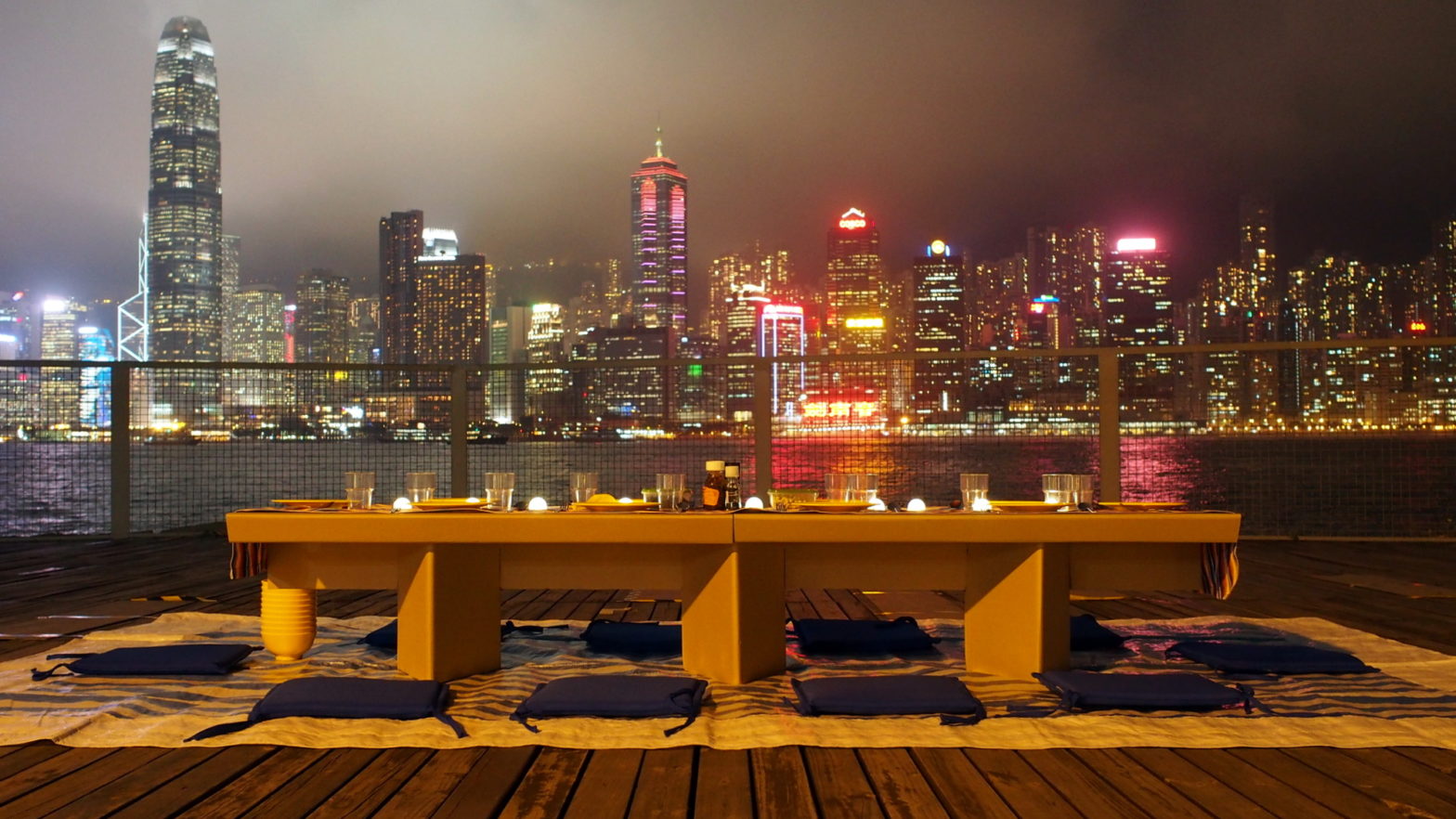Almost one year ago, a casual conversation over coffee became an ongoing experiment in crafting immersive dining experiences to build lasting connections through engaging dialog. Six dinners and many tweeks later, I’m beginning to hone in on the building blocks that form a foundation for success.
While Hong Kong is an extremely social city, almost all interactions happen outside the home. Apartments are small and kitchens even smaller, so people rarely entertain in their own space. This creates an unfortunate dynamic where conversations tend to be artificially shortened by local restaurant dining customs and there’s usually a point when participants must “ante up” in order to continue the discussion. Interactions don’t have the opportunity to organically unfold over time in a relaxed atmosphere. One of the few exceptions to this rule are junk boats, where the people are captive for a full day and the financial obligations are sorted in advance. However, this environment is not conducive to deep discussions because there are so many stimuli competing for attention. Hong Kong expats often find that while they have many casual friends, they are missing the deeper connections that these types of interactions facilitate.
My goal has been to take advantage of Hong Kong’s liberal public space regulations in order to create dining experiences that mimic entertaining at home by removing financial and time barriers, but also surprise and delight. This recipe produces immersive environments that stimulate many senses, encourages open dialog, and are vividly remembered. In a transient city where events are abundant, people are opportunity rich and time poor. Almost like performance art, these experiences must have enough appeal to peak curiosity, perceived value to invest time and impact to build bonds. My ingredients are:
- Ten communicative and curious people
- Themes that tie those people together
- Unique settings
- Basic comforts
- A sprinkling of delight
People. In my experience, I’ve had the most success with groups of 10 guests. Fewer than 8 feels less like an event and more than 10 makes it difficult to participate in a single discussion. Often there is a last minute cancellation or emergency that prevents one person from attending anyway. Their curiosity is essential for genuine interactions and strong communicators (don’t only read extroverts) will thrive in this environment. More specifically, I follow a handful of guidelines for inviting guests. Variety is extremely important and I try my best to make the group as diverse as possible in terms of age, gender, life stage, nationality, sexual orientation, socio-economic status, work, etc. Almost always, I have met every participant at least once before and have a sense of what they would gain from the experience. It’s fine if guests already know others in the group, but hopefully no more than one or two. Recently I’ve started inviting one previous participant to the dinner in order to add a thread of continuity and help build a sense of community. I’m also experimenting with a Facebook group where people can connect afterwards.
Themes. Inviting participants around a specific theme not only kickstarts the conversation, but helps them understand why they specifically were invited and what they are likely to gain through participation. When this is not clear, typical flakiness prevails. In terms of themes, I try to dig deeper than “all of you like to travel” or “all of you work in X industry”. For example, all of the participants at my first dinner made things with their hands. At a recent dinner, all of the participants where at various stages along an active path of self discovery. This way, guests have the opportunity to learn from each other and share resources that are timely and relevant.
Settings. It’s so much fun to brainstorm locations for these gatherings. There are so many places that offer dramatic views that rival even the best Hong Kong bars and restaurants. For now, I see no reason to use the same location twice, which helps reinforce the uniqueness of each dinner. Accessibility and facilities are rarely an issue, but rain sometimes poses a problem. I’m always on the hunt for spaces that offer a covered alternative. While a unique setting isn’t imperative, it does impact how memorable the experience is for everyone.
Basics. Of course, all of this thoughtful planning can be easily overshadowed if basics like bathroom access, comfortable seating and dietary restrictions are overlooked. The pop-up dinner kit includes multi-course service for 10, food storage (both hot and cold), furniture and accessories – all which fits in a taxi. Since I host the pop-ups in Hong Kong, I draw inspiration from the local culture. The “rug” is made from tarp material typically found covering night market stalls. The table is cardboard, which pays homage to helpers who gather on Sundays in public spaces and often make temporary structures out of the same material. The dishes are melamine, standard issue at any classic dai pai dong. Even the meal is stored in traditional Chinese stainless steel stacking containers and thermoses. These associations and layers of meaning add depth to the experience. As for food, all of the dinners have been home-cooked thus far. My theory is that the conversation should be more exciting than the food, but I am planning to test that idea over the next few months.
Delights. A handful of creative details that delight or surprise guests provide a much-needed ice breaker and can further reinforce the theme. This can manifest itself in many ways, such as hosting a food production-themed dinner at a farm or serving new locally-brewed beer at a gathering of start-up supporters. Each situation is unique, which makes the possibilities endless. The key is to be selective so that the results enhance the experience and make it feel more authentic.
Much like Jeffersonian or other salon-style dinners, I hope people walk away inspired, with an expanded world view and a few new friends.

Pingback: 88 Days and counting | with ease